Linux系统中重要的文件系统
一.解析映射文件
/etc/hosts 本地的DNS 192.168.15.101
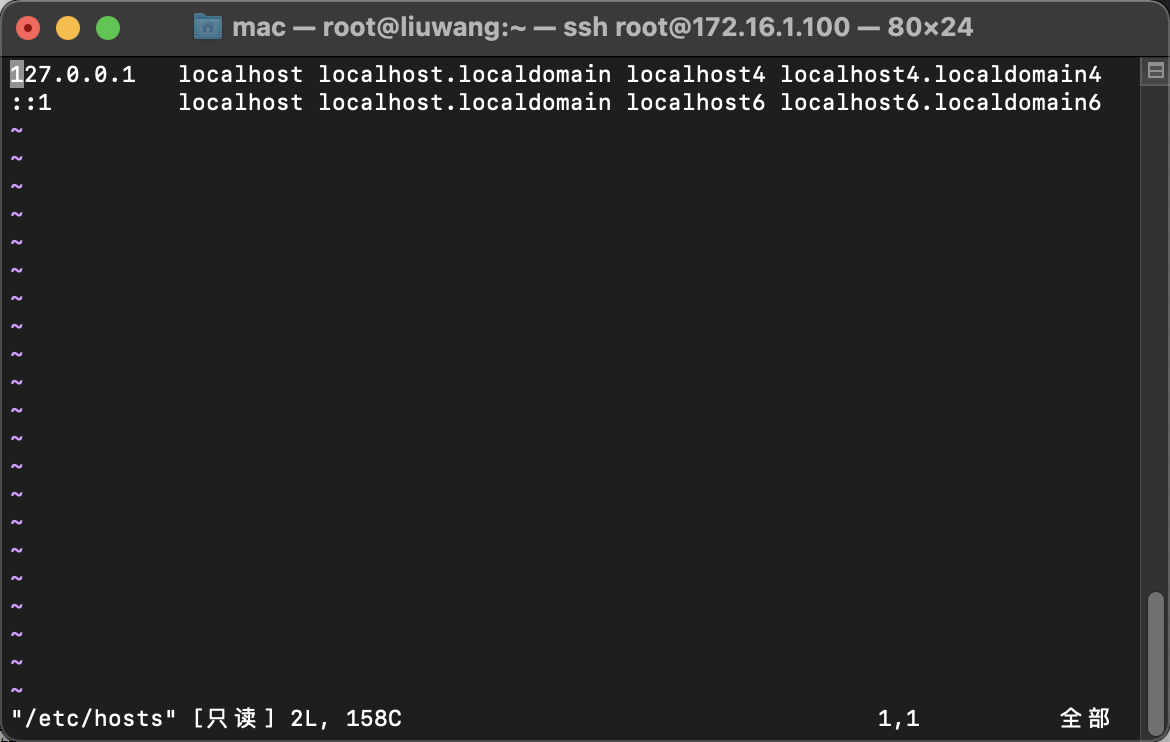
二.磁盘挂载文件
/etc/fstab
磁盘挂载文件
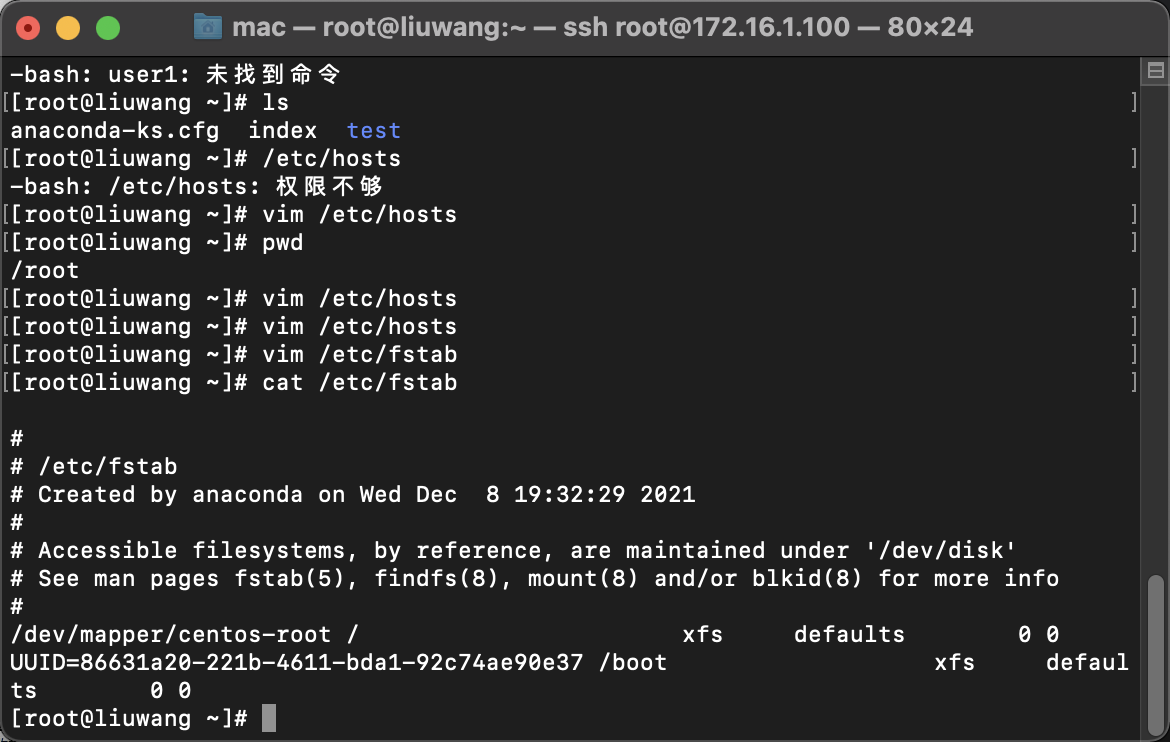
三.开机加载脚本
/etc/rc.local 1、编辑开机自启动脚本 vim /etc/rc.local 2、设置开机自启动权限 chmod +x /etc/rc.d/rc.local 3、重启系统
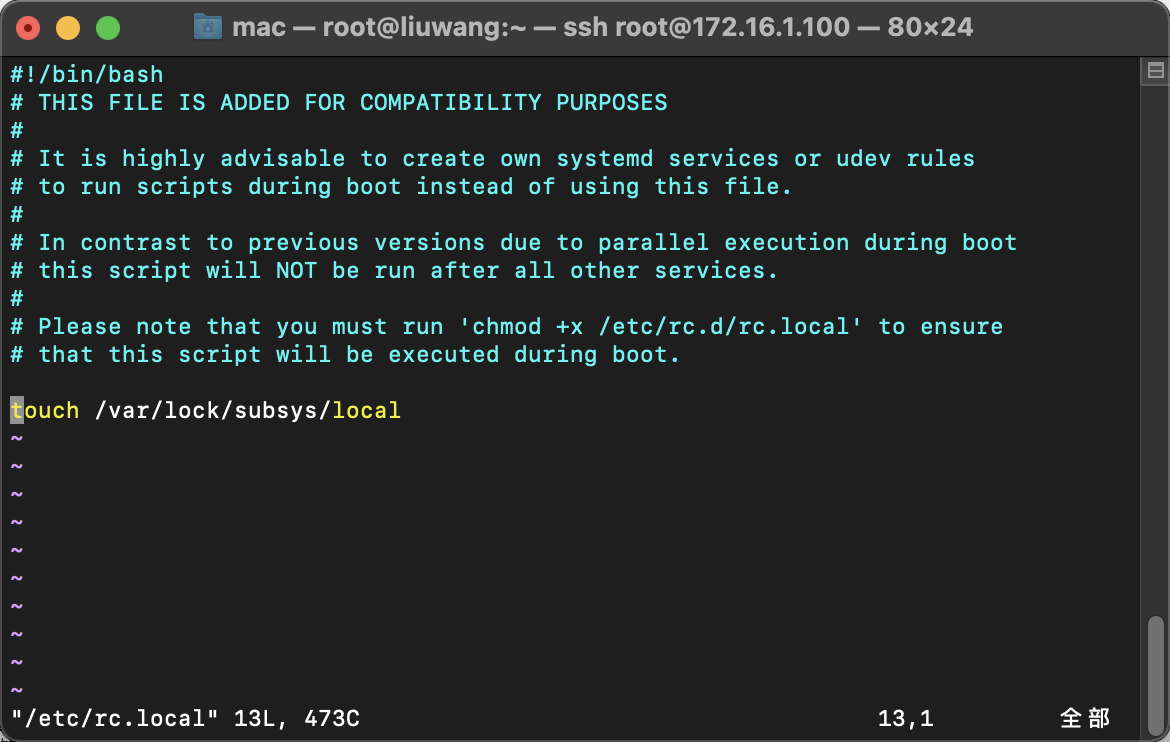
四.系统启动级别
系统启动级别: 0、关机 1、单用户模式(无法通过xshell的方式使用) 2、多用户无网络模式 3、完全多用户模式 4、待定 5、桌面模式 6、重启 设置系统级别: init [编号] 临时设置 systemctl set-default [系统启动级别] 通过单用户模式修改密码 1、重启 2、在启动选择系统内核界面,按 e 键进入单用户模式 3、找到 linux16 开头行,删除 ro , 并且在 ro 处添加 rw init=/sysroot/bin/sh 4、按 ctrl + x 进行系统重新引导 5、执行 chroot /sysroot 6、执行 passwd root 7、执行 touch /.autorelabel 8、执行 Ctrl + D 重启系统
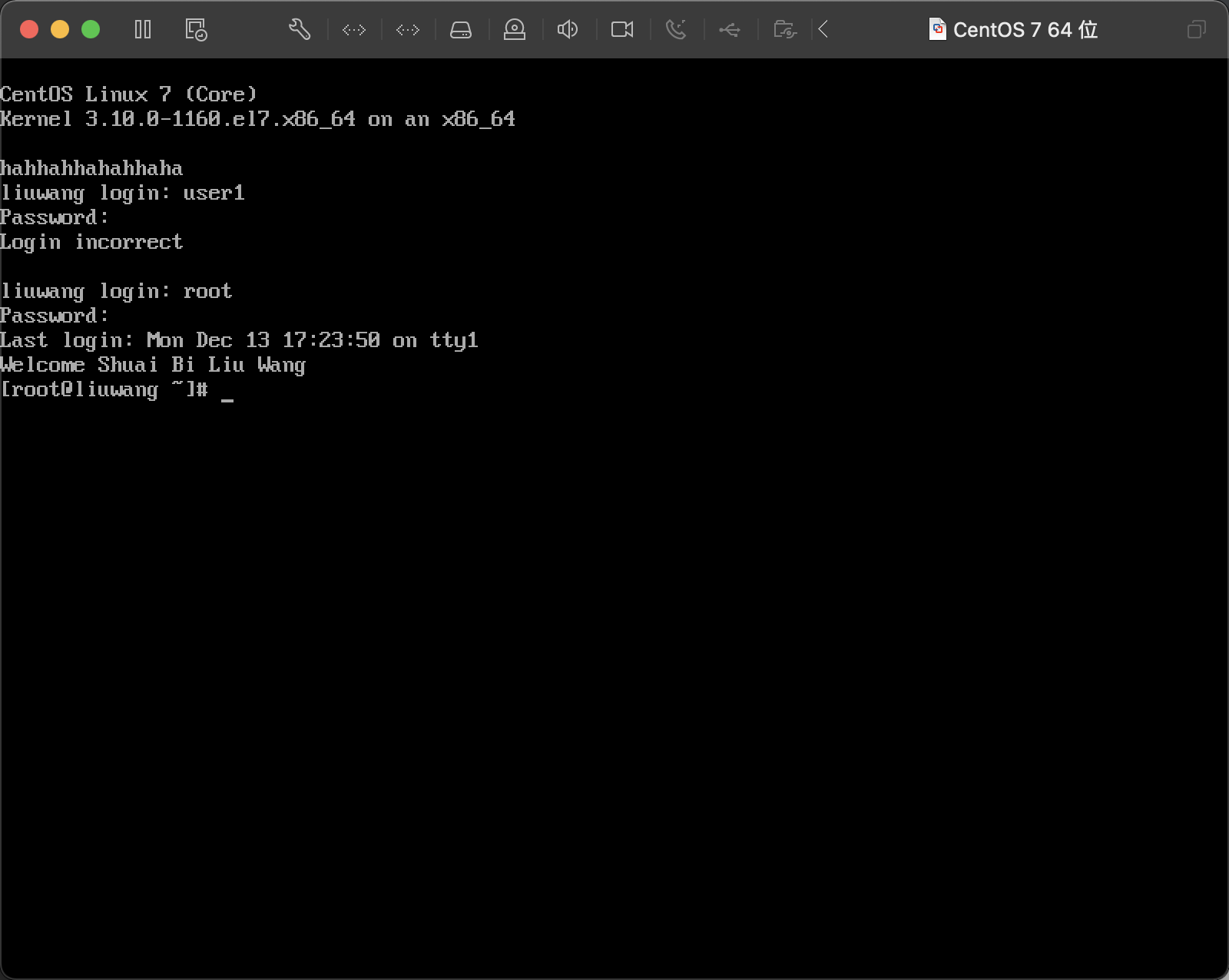
五.变量加载文件
在Linux中添加环境变量怎么添加呢? 文件 /etc/profile /etc/bashrc ~/.bash_profile ~/.bash_rc 文件夹 /etc/profile.d/ 增加环境变量有两种方式: 1、临时添加 2、永久添加 增加环境变量的格式: export PYTHON_HOME='D:/python' 查看本机的环境变量: echo $PYTHON_HOME : 查看某一个环境变量 printenv : 查看所有的环境变量 读取环境变量的几种情况,并且测试出使用文件的先后顺序 1、重启 /etc/profile.d --> /etc/profile --> /etc/bashrc --> ~/.bashrc --> ~/.bash_profile 2、切换用户 /etc/profile.d --> /etc/bashrc --> ~/.bashrc 知识储备: useradd [用户名] su [用户名] 3、重新登录用户 1、su - [用户名] /etc/profile.d --> /etc/profile --> /etc/bashrc --> ~/.bashrc --> ~/.bash_profile 2、ssh root@192.168.15.101 /etc/profile.d --> /etc/profile --> /etc/bashrc --> ~/.bashrc --> ~/.bash_profile
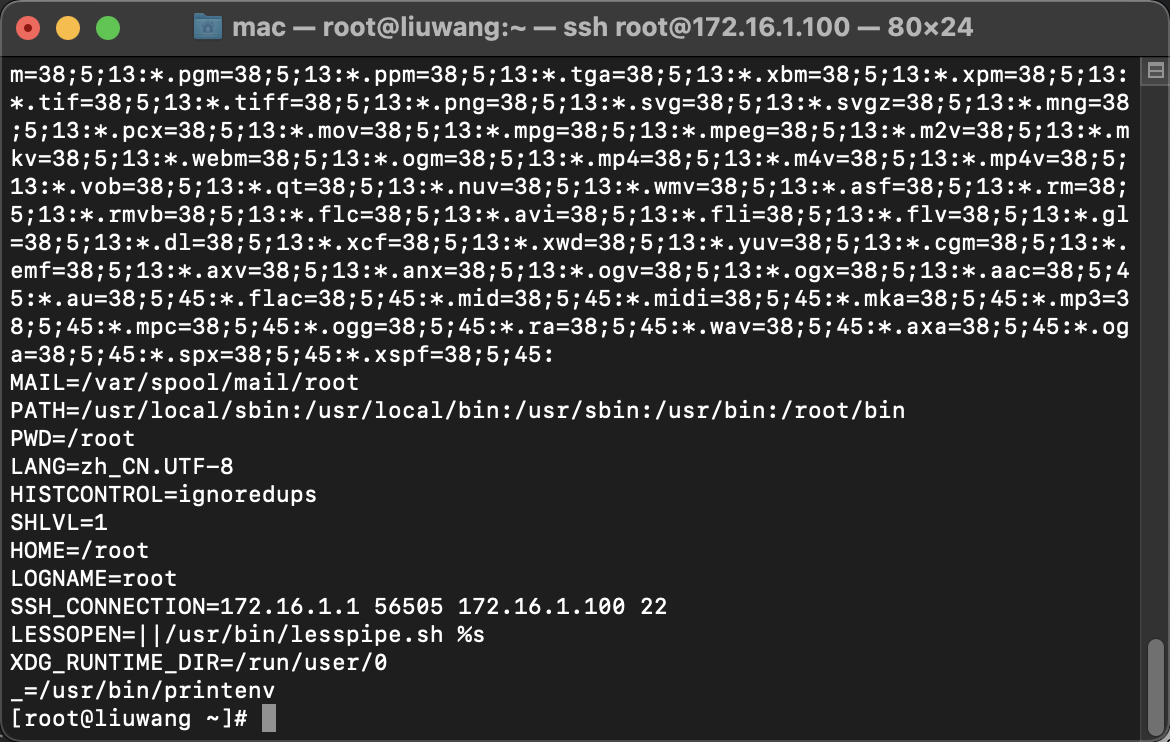
六.登录提示文件
登录成功之后显示的信息。 /etc/motd 登录之前显示的信息。 /etc/issue
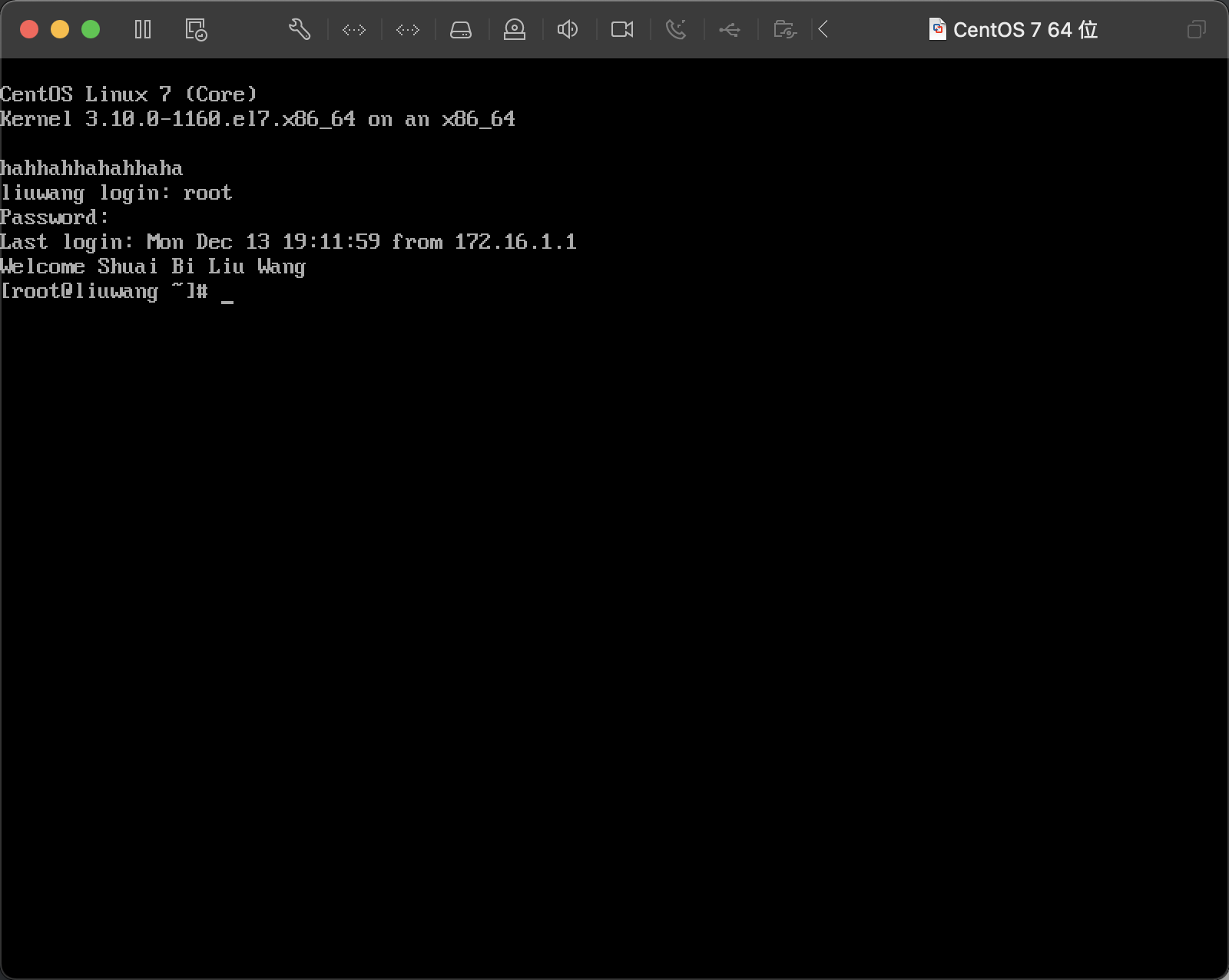
七.编译安装目录与系统日志目录
# 安装第三方软件的目录 /usr/local 下载rpm安装包 yum安装python:yum install python3 # 系统日志目录 /var
八.保存在系统运行状态的目录
保存CPU运行状态的:/proc/cpuinfo lscpu 保存内存的状态的:/proc/meminfo free 保存系统负载的:/proc/loadavg w 0.00 : 1分钟内的CPU负载 0.01 : 5分钟内的CPU负载 0.05 :15分钟内的CPU负载 负载:当前系统的所有进程占用CPU的时间比 保存系统挂载信息:/proc/mounts mount umount

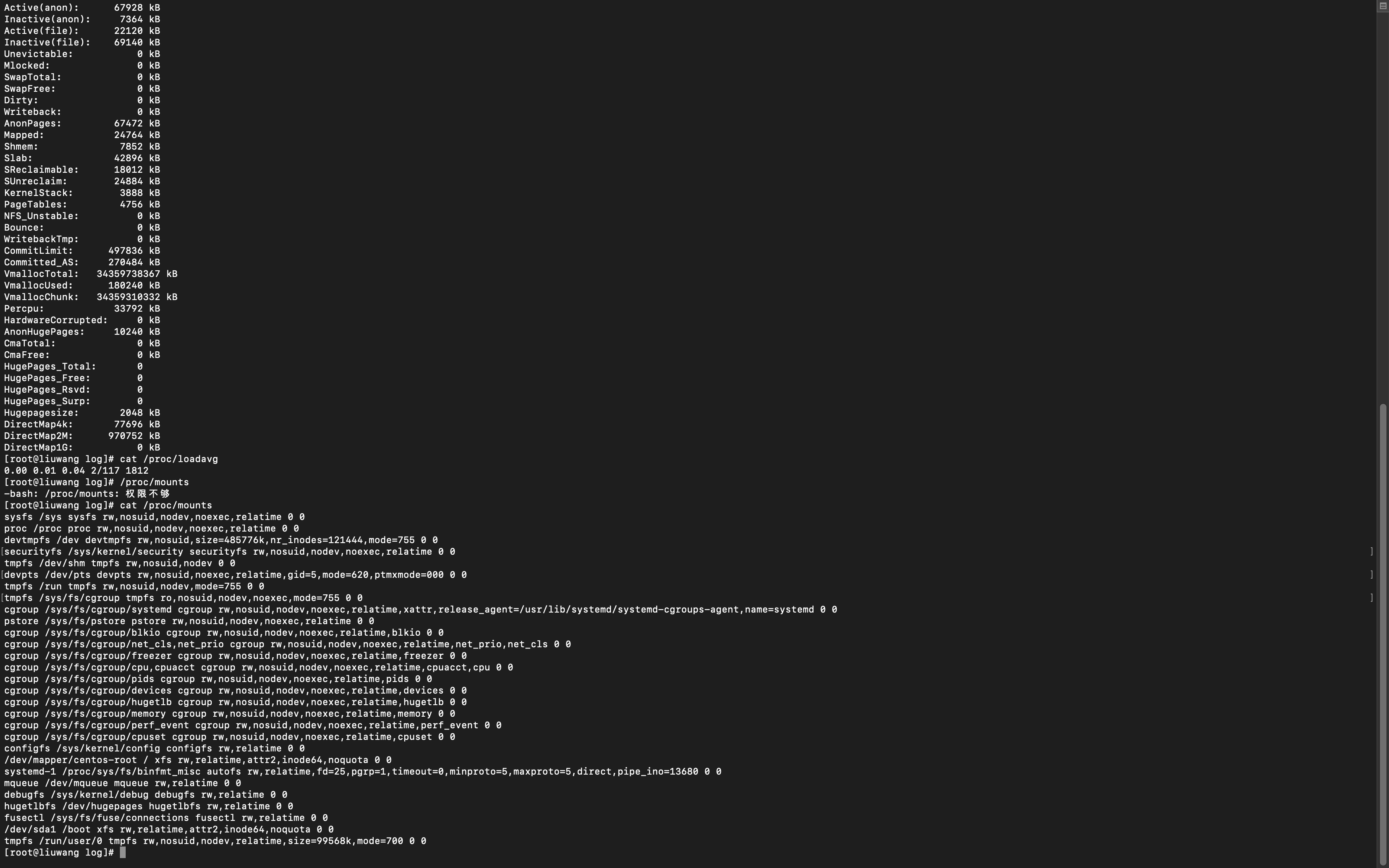




 浙公网安备 33010602011771号
浙公网安备 33010602011771号